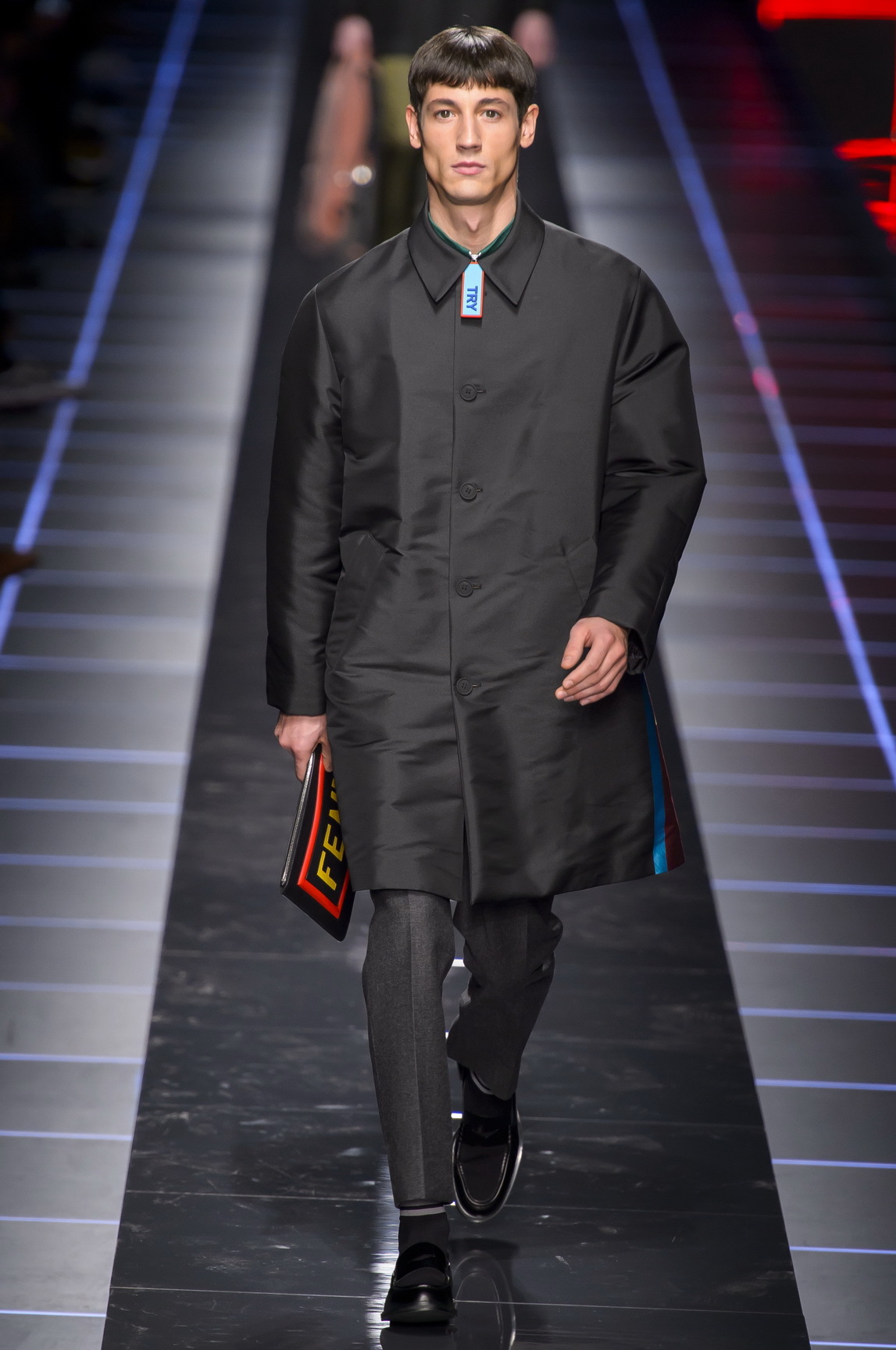“Old values, new fashion,” Silvia Venturini Fendi recapped after her electric Fendi show on Monday evening in Milan. Michel Gaubert’s high-octane soundtrack – including a brilliant seating score courtesy of Patrice Baumel’s thrashing trance track “Surge” – set the tone for the most magnetic Fendi collection since the dynasty’s matriarch reinvented the direction of her menswear two seasons ago. “Positive colors,” she reflected. “I need to be optimistic.” Her vibrant, pop-tastic spectacle fusing futuristic tech fabrics with fur – the oldest and most primitive material of them all – had all the power of a protest march: a kind of peace parade for a new age, where banners were replaced with single words knitted into headbands and sweaters. “Simple words like ‘love’, ‘hope’, ‘listen’, ‘try’. I was really into this,” Venturini Fendi explained, pointing at a poem by Ernest Hemingway – also attributed to William Arthur Ward – on her mood board backstage, which simply read: “Before you speak, listen. Before you write, think. Before you spend, earn. Before you invest, investigate. Before you criticize, wait. Before you pray, forgive. Before you quit, try. Before you retire, save. Before you die, give.”
Read: Read our fall/winter men’s reports from London, Russia, and Milan.
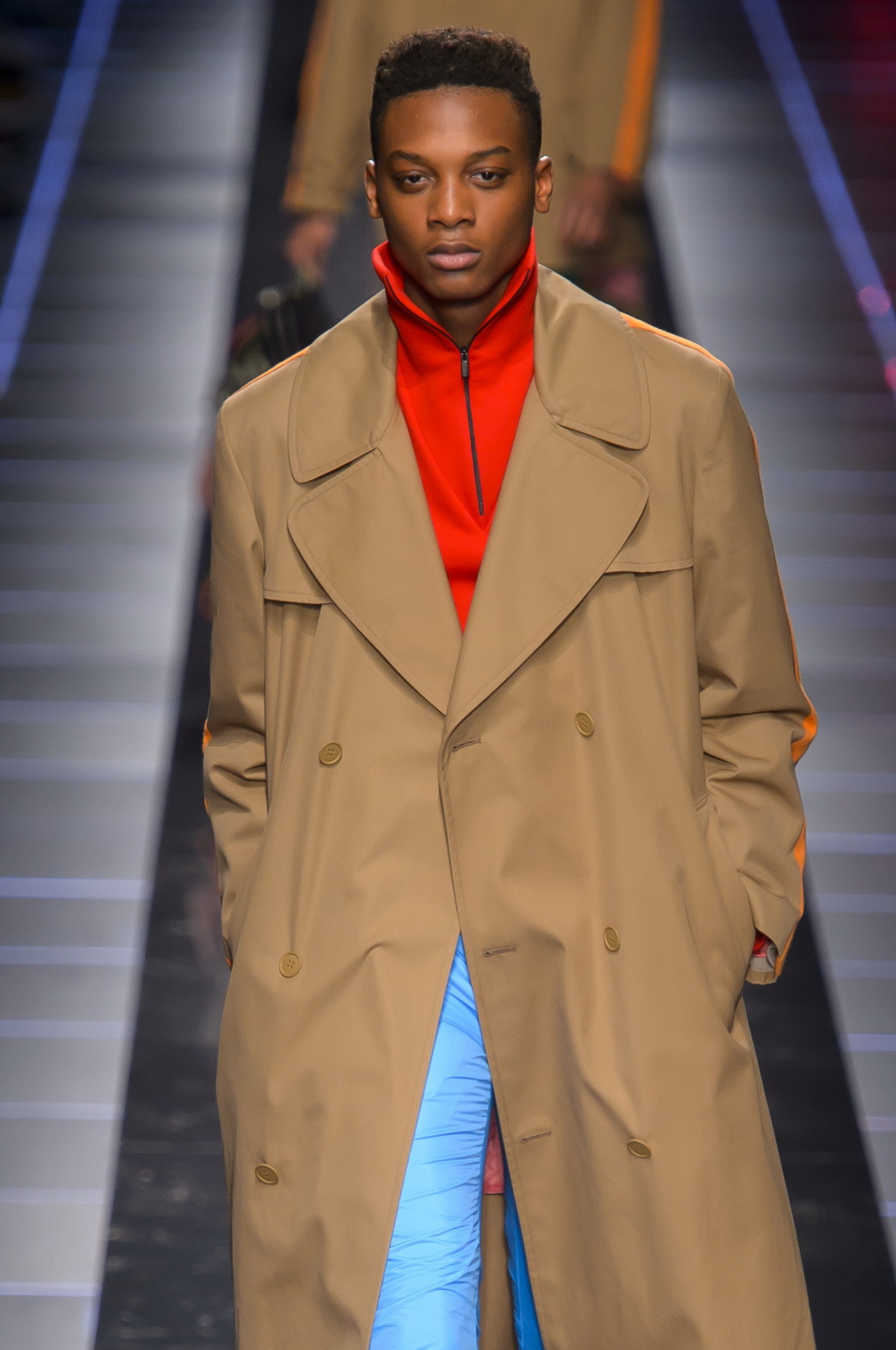
If the London shows represented a kind of activism of the new guard, Milan’s establishment has reacted to current political affairs with pacifism, and for a generation of women – Silvia Venturini Fendi, Miuccia Prada, and Donatella Versace – molded by the 60s and 70s, it makes total sense. Their very diverse collections this weekend have shared the fundamental common-sense attitude of the hippie generation, which is by no means neutral or starry-eyed but rather a baffled astonishment towards the pessimism and negativity of the reactionary waves that define the popular mentality these days. These women belong to the generations that characterized political correctness before it became a tool for silly censorship and eventually a Donald Trump swearword. In the decades after World War II, political correctness served to prevent us from making the same mistakes that caused that war, and it shaped a generation of kids, who didn’t take peace for granted – who reminded themselves that there was a reason we invented political correctness in the first place, much like Fendi, Prada, and Versace did this weekend, albeit in very different ways.
Read: Fight for your right: Day one at Milan men’s shows.
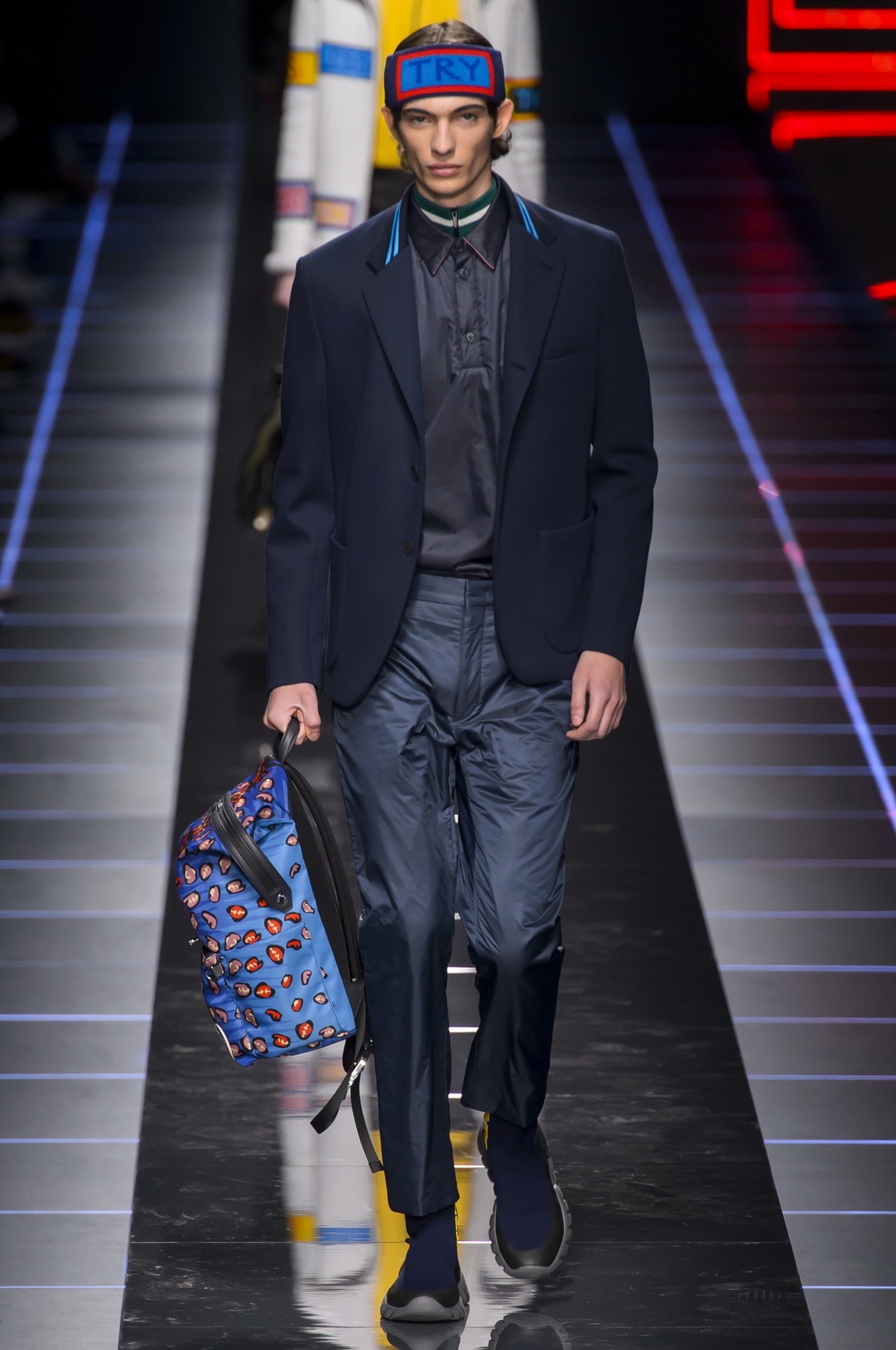
“It’s so easy if you apply those rules, in any way you live,” Venturini Fendi said, looking at the poem. “I think these are universal words. And then I also added ‘Fendi’, because for me it’s not a logo, it’s a history made up of a lot of people. Then we started doing ironic jokes like ‘trust Fendi’, ‘try Fendi’ and all these kind of things,” she smiled, referring to headbands that had one word on each side of them. “It’s really an everyday wardrobe: things that you cannot live without anymore.” Her forging of old and new never seemed forced – rather, it was wonderfully mutant-like and dramatic, like a nylon bomber with an aggressive fur ruffle breaking through the outline of the sleeve from within, or leopard-printed fur sleeves hanging off a starkly modernist grey coat turning it into some mad futuristic Renaissance tunic. It felt so right, so exhilarating, and so unique to the house of Fendi, whose newfound fearlessness and fabulous spirits have been going from one high to the other in recent seasons. “I try not to look to the past. I try to look to the future. I think there are still many, many good things to come, but we have to look to our values. We shouldn’t lose them,” Venturini Fendi concluded before a K-Pop star roped her in for a photo. “Fantastic,” read one of her headbands, and that was exactly what it was.
Read: The need for normality: day two at Milan men’s shows.
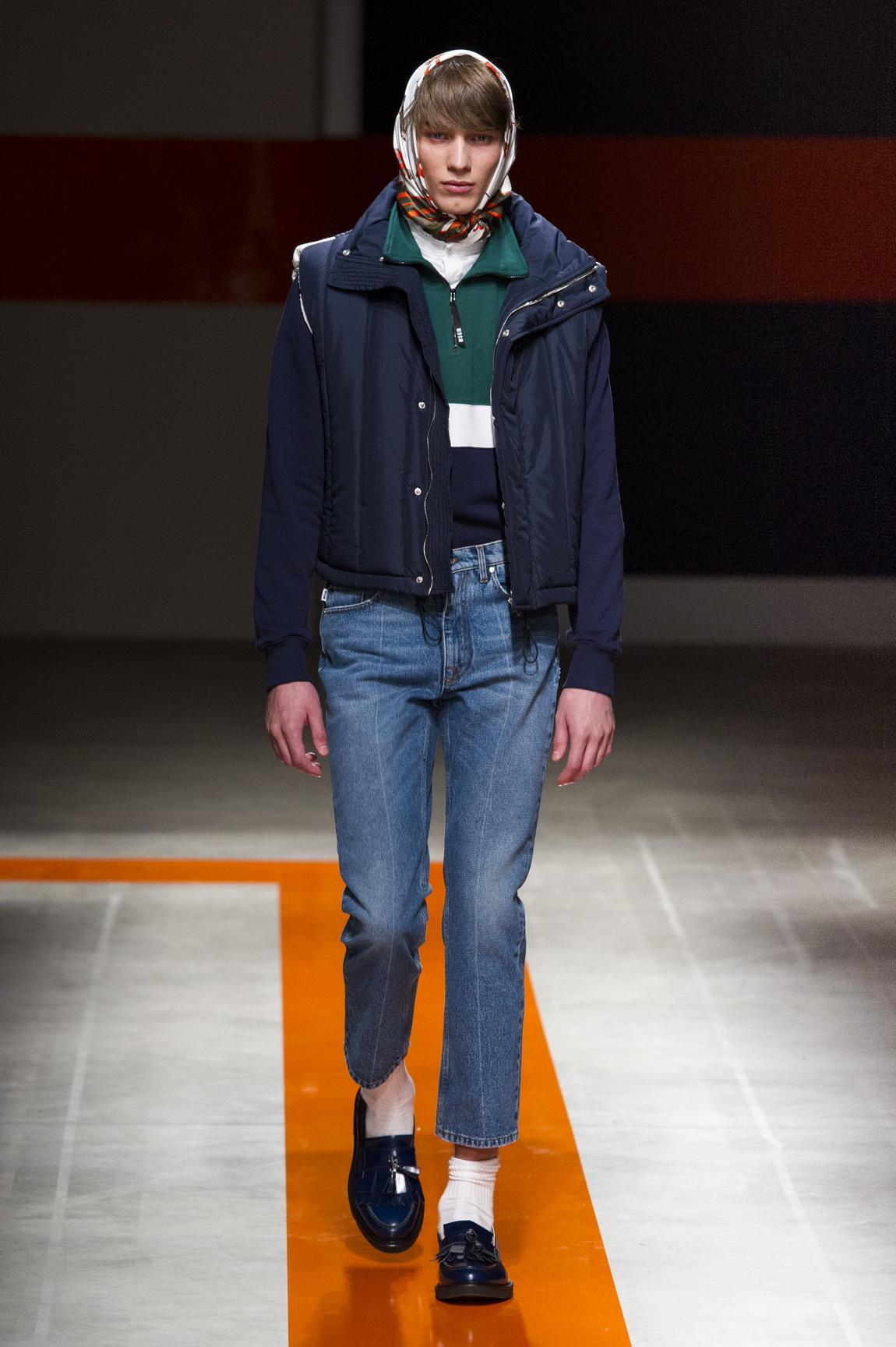
“The clash is really important to MSGM,” Massimo Giorgetti pointed out after his show, and he couldn’t have picked a more majestic muse for his own take on old values and new fashion. Queen Elizabeth II and her iconic headscarf graced his mood board backstage, and she reigned throughout the show where – in a stroke of pure styling genius – every male model wore a patterned headscarf the Lilibeth way. Like everyone else on the face of the Earth, Giorgetti had been watching The Crown, losing himself in the extraordinary costumes and those English countryside looks. It was in the sports of countryside England he also found the contrast for his necessary clash. “It’s between the aristocratic and the sporty,” he said, and so Giorgetti brought new life to Balmoral in tech-y country quilting, preened plaid, oversized fair-isle knits, and ripped jeans. Behind the royal storylines, The Crown is really the story of the revolutionizing decades after World War II when new values were tried and tested, and even a young queen had to be a rebel. Born in 1977, Giorgetti didn’t grow up with the echo of the post-war era the way Silvia Venturini Fendi did, but in The Crown he found a window to that time, perhaps not so different to the one in which we now find ourselves.
Read: Karl Lagerfeld on his holding his position at Fendi womenswear for more than 50 years.
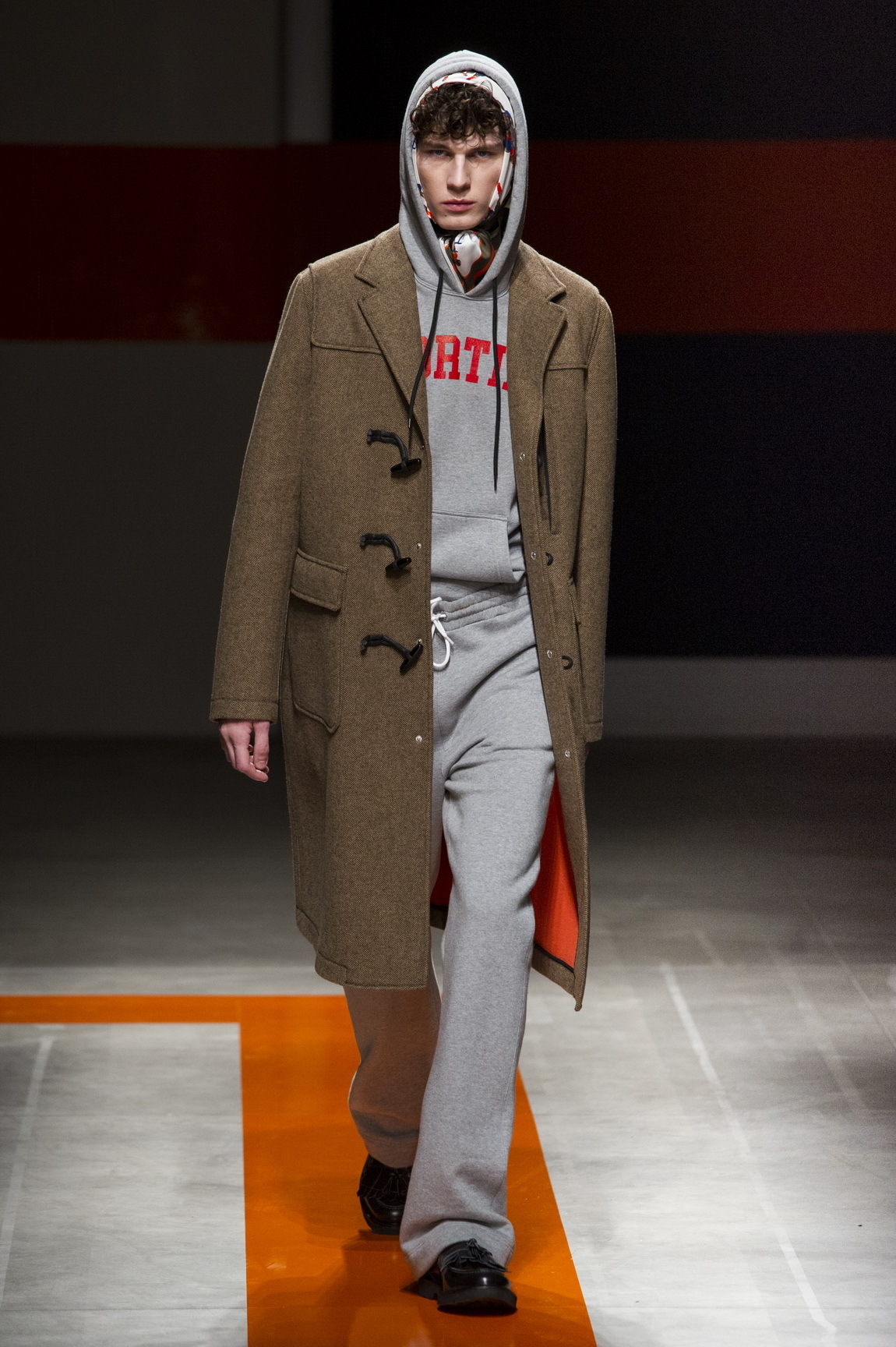
Credits
Text Anders Christian Madsen
